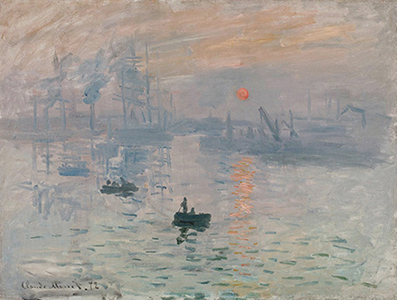
Home |
  |
|
|---|---|---|
Before the exhibitions |
Eight Impressionism exhibitions |
After the exhibitions |

The eight Impressionism exhibitions

Paris: 1874 -1886

• Development towards Impressionism
• The eight exhibitions in Paris
• Effects

The fascinating story of the eight exhibitions of Impressionist painters in Paris from 1874 to 1886.
A group of mostly young painters, who saw themselves as innovators in contrast to the traditional art of the time, attempted to present a new perspective on art in eight self-organised exhibitions in Paris. It was an art form that was controversial among the public and critics at the time, only gaining widespread recognition much later and now belonging to the established canon of fine art: Impressionism.
First, the section ‘Before the Exhibitions’ traces the development of painting towards Impressionism from around 1800 onwards: the painters of Barbizon, English painters, Nazarenes and Pre-Raphaelites, as well as several important painters (Delacroix, Ingres, Courbet, Corot) are presented.
The history of the eight individual Impressionist exhibitions in Paris between 1874 and 1886, featuring painters such as Mary Cassatt, Gustave Caillebotte, Paul Cézanne, Edgar Degas, Paul Gauguin, Claude Monet, Berthe Morisot, Camille Pissarro, Alfred Sisley and Auguste Renoir, is explored in the section “Eight Impressionist Exhibitions”.
The further development of Impressionist painting after 1886 throughout the world is summarised under ‘After the exhibitions’. The impact of their painting is also briefly described here: the Pointillist movement and the Post-Impressionists Cézanne, Gauguin, van Gogh and Toulouse-Lautrec.
Various links (websites) on the subject of Impressionism >>>
Literature used on the subject of Impressionism >>>
Imprint, Information & Contact
 |
|---|
| Otón Pabst Graphics & Photography |
1-dez-25 |
Kunstraum 1998 - 2017 Internet Gallery |
